There are 11 Components of Physical Fitness. Do you know all of them? If so, do you incorporate them into your daily workout routine? Learn about the Components of Physical Fitness by clicking HERE.
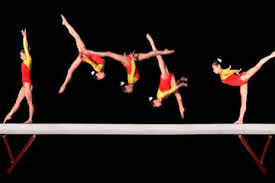
Jeff Angel
There are 11 Components of Physical Fitness. Do you know all of them? If so, do you incorporate them into your daily workout routine? Learn about the Components of Physical Fitness by clicking HERE.

The American Heart Association suggests at least 150 minutes per week of moderate exercise or 75 minutes per week of vigorous exercise (or a combination of moderate and vigorous physical activity). Thirty minutes a day, five times a week is an easy goal to remember, however you will also experience benefits even if you divide your time into two or three segments of 10 -15 minutes per day.
Physical activity is anything that makes you move your body and burn calories, such as climbing stairs or playing sports. Aerobic exercises benefit your heart, such as walking, jogging, swimming or biking. Strength and stretching exercises are best for overall stamina and flexibility.
The simplest, positive change you can make to effectively improve your heart health is to start walking. It’s enjoyable, free, easy, social and great exercise. A walking program is flexible and boasts high success rates because people can stick with it. It’s easy for walking to become a regular and satisfying part of life.
The following chart represents an estimate of caloric expenditure during specific physical activity. Listed are 4 different weight categories. Caloric expenditure is influenced by intensity, mode of exercise, one’s level of conditioning, metabolism, and body weight. Try to do at least three of these activities during your training week. This might help to keep you from getting bored with your weekly schedule and will help to make you a more well-rounded fitness enthuseist. You might even find a new mode of exercise to enjoy. My top two exercises are jump rope and fast-paced calisthenics. My new favorite that’s been around for years… the rowing machine.
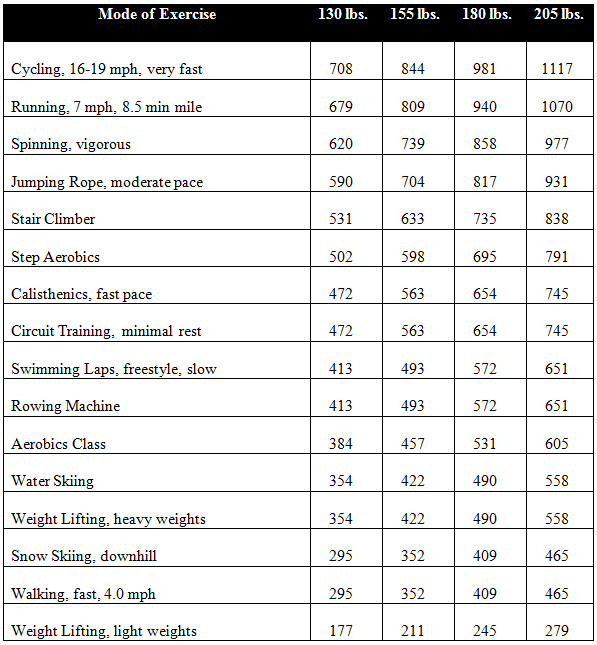
I meet several people in any given week that want exercise advise. The number one question I get is, “What’s the best exercise?” My response is always, “There is no best exercise, any exercise is great if you do it consistently.” If you have read my other blogs, then you know that I believe consistency with exercise and eating a healthy diet throughout your life is most important. So, be consistent with this following work-out and you’ll be sure to shed pounds (if you need to), increase strength, and improve your cardiovascular conditioning (including the other 9 components of physical fitness)…
Be sure to do a 10 minute warm-up before performing this work-out (i.e. walking, climbing stairs, elliptical machine). As always, consult with your physician before doing any exercise program and always monitor your heart rate to keep it within your target heart rate zone.
This is a HIGH-INTENSITY short work-out that should only take 15 minutes for beginners and less than 8 minutes for more advanced. The only equipment you need is your body weight!
READY!? Begin,
1. 10 Jumping Jacks
2. 5 Push-Ups (do all with trying to get your nose to the floor)
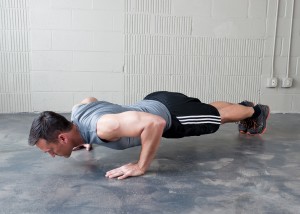
3. 20 Mountain Climbers
4. 5 Burpees/Squat Thrusts
5. 10 Body Weight Squats (do all with your hands behind your head)
6. 20 Jumping Jacks
7. 10 Push-Ups
8. 40 Mountain Climbers
9. 10 Burpees/Squat Thrusts
10. 20 Body Weight Squats
11. 30 Jumping Jacks
12. 15 Push-Ups
13. 60 Mountain Climbers
14. 15 Burpees/Squat Thrusts
15. 30 Body Weight Squats
THAT’S IT! If you completed this in 10 minutes or less and kept your heart rate in your target heart rate zone, then you are in excellent shape (my first time doing this quick circuit was 6 minutes 47 seconds)! If you found this challenging and went over the 15 minutes, that’s o.k.! Keep working at it. Do this work-out every other day for 4 weeks and you’ll certainly see improvements in your fitness level.
Daily Caloric Intake and Basil Metabolic Rate
Click here to determine approximately how many calories your body needs at rest in order to sustain your current condition (i.e. weight, body fat%, fat weight). Remember, this is your body at rest. You then must add on additional calories for physical activity. Please read further to determine your approximate total caloric intake per day.
Gaining weight and losing weight is a very simple formula. When caloric intake exceeds caloric expenditure you will gain weight. When caloric expenditure is greater than caloric intake, you will lose weight. Thus, you must know how many calories (kcal) are in a gram of protein, carbohydrate, and fat. You should also know approximately how many calories you should consume and expend in a day. 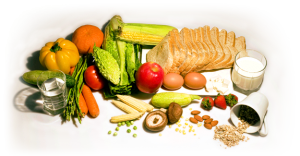
Simply put, you must burn off more calories than what you consume in any given day in order to lose weight. Knowing how many calories you are consuming every day is going to be an important part of losing weight. Therefore, you should know how many calories are in the nutrients you consume.
To find out approximately how many calories you are consuming in a day is easy. There are apps available for smart phones and tablets such as lose it and fitness pal. These apps can help you to stay focused on your eating habits and keep you aware of the amount of calories you’ve been consuming. If you don’t have access to apps, then you can keep track of your caloric intake by writing down the foods you consumed in a daily food journal. Be sure to write down all foods, portion size, and liquids. You must do this for one full week. We then can compare your average daily caloric intake to your approximate Basil Metabolic Rate (BMR).
Your BMR measures the amount of energy expended at rest and usually represents about 70% of an individual’s total daily energy expenditure. Additional calories are then added on to one’s BMR based on physical activity level. Depending on whether the person is sedentary or very active, 400 to 800 kcal may be added. For example, if you have a job that requires you to sit at a desk all day and you don’t workout regularly, then you should add 400 calories on to your BMR. So, if your BMR equals 1,200 calories then add 400 calories to that number. This equals 1,600 cal/day to sustain your current weight and body fat. Remember, your BMR tells us how many calories your body needs in order to sustain your current condition (i.e. body weight, % body fat, muscle tissue) at rest. Now, if you are trying to lose weight you should try to decrease your daily caloric intake by 500 cal/day. This can be done by decreasing food intake, exercising more, or the combination of the two. Try to burn or reduce 3,500 calories in one week. That is equivalent to 500 calories a day. This will help you to lose 1 lb in one week (3,500 calories equals one pound of fat).
Basil Metabolic Rate is influenced by several factors. One’s BMR is primarily effected by body size (height and weight). If two people, one weighing 100 lbs and the other weighing 130 lbs, jog one mile together, the heavier person will expend more energy and burn more calories. Other important factors that effect one’s BMR include age and sex. BMR decreases with age and is highest in a growing child. Men have a higher BMR than women due to the fact that males are generally larger than females. Other factors related to BMR include diet, heredity, and hormones.
Bring It Home Personal Training is happy to announce that Group Training with the Marian High School Volleyball Team has begun! Janine and I are excited to take on this new chapter in training for Bring It Home. We hope all the players find the training sessions to be fun, challenging, and educational.
The following work-out is for all players who missed practice on February 3, 2016. For all others not part of the team, please feel free to try this first training session on your own. This is Timed Circuit Training which incorporates 10 Components of Physical Fitness. It is a total body work-out that will keep your heart rate high and burn 400-600 calories if done 3 times with no rest between exercises. Remember to work at your own pace and monitor your heart rate. Always check with a doctor before beginning an exercise program.
Training Session #5 03-02-16
Timed Circuit Training
60 second bouts
EXTRA LEARNING: Go to www.bringithomepersonaltraining.com and read “5 Tips to Improve Your Physical Fitness Level” before next week’s training session.
*All participants are encouraged to do this circuit a second day on their own. Be sure to have one day rest between training days!
Training Session #1 02-03-16
Timed Circuit Training
60 second bouts and perform circuit 3 times. Do all 12 in a row then repeat 2 more times!
If you have any questions regarding an exercise, please post under “Speak Your Mind” at the bottom of this page.
EXTRA LEARNING: Read “The 11 Components of Physical Fitness” found under “How We Bring It” (to the right on this page or on our homepage) before next week’s training session.
*All participants are encouraged to do this circuit a second day on their own. Be sure to have one day rest between training days!
Bring It Home Personal Training teaches all clients the importance of the 11 components of physical fitness. Muscular strength and muscular endurance are two health-related components of fitness that are important in everyone’s daily life.
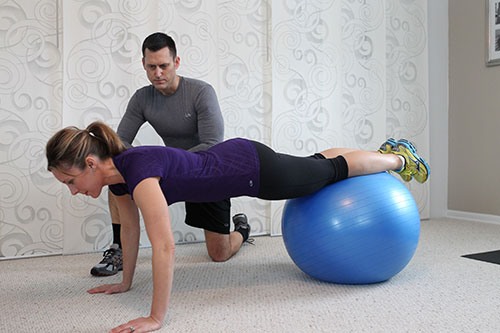
Muscular strength is defined as the maximum amount of force that can be exerted by a muscle. Muscular endurance is defined as the ability of a muscle to exert a force repeatedly over a period of time. Muscular strength and muscular endurance are related; an increase in one of these components of fitness usually results in some degree of improvement in the other. Having a reasonable amount of strength and endurance can help individuals to be more efficient in performing daily tasks.
Bring It Home Personal Training believes that a strong core is most important for total body strength. Strengthening of the core (abdominal muscles, obliques, and low- back) will improve posture, help to prevent low-back pain, and make your entire body stronger. Your body’s core generally consists of the rectus abdominis (abs), internal and external obliques, transverses abdominis (deep reinforcing layer), and erector spinae (low back). The core is the center of all your strength. Having a weak core will certainly cause low back pain, poor posture, and poor balance. Strengthening and stretching this area of the body should be done with focus and consistency.
All muscle groups should be stimulated regularly through some type of resistance training. Resistance training, also known as strength training, not only makes muscles strong, firm, and shapely, but also benefits the body in other ways. Please be sure to check out our gallery for free images of exercises that help to improve muscle strength and endurance and all other components of physical fitness.
Benefits Of Strength Training:
In general, strength training should be done at least two days a week, with a minimum of two exercises per muscle group. Some people will have totally different fitness programs depending on what goals have been set. Individuals are unique with different strengths and weaknesses. Finding a weak point is something to work on, not to neglect. Having the proper mix of exercises is most important in developing a fitness program that will help you to improve upon your weaknesses and to reach your goals.
Developing the body you want and reaching optimal physical fitness levels takes time. Do not expect changes to occur over night. You must be patient and consistent with all aspects of your fitness program. Consistency is the key. If you find yourself putting your strength training days off, you will not see the changes you want to make. Also, be sure to incorporate all 11 components of phyiscal fitness into your daily exercise program. Having a well-rounded exercise program will help you to stay motivated and focused. You will see increased muscular strength and muscular endurance, toned muscles, increased energy, and better self-image.
We combine our knowledge and expertise with our clients' commitment to training, so we, as a team, can maximize results.
- Jeff Angel